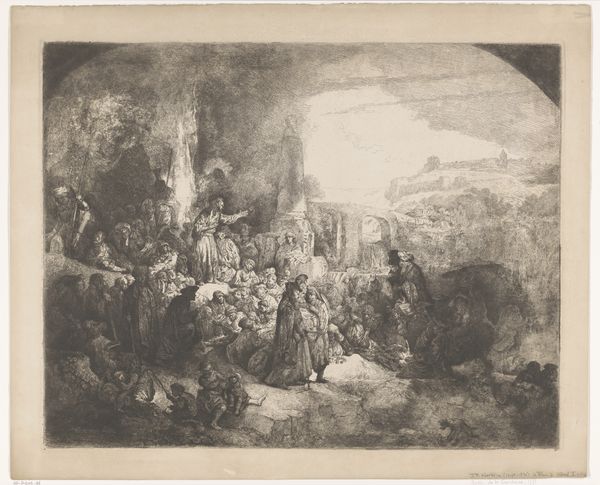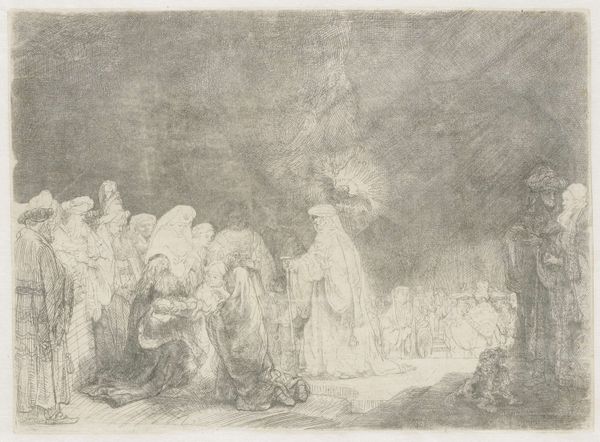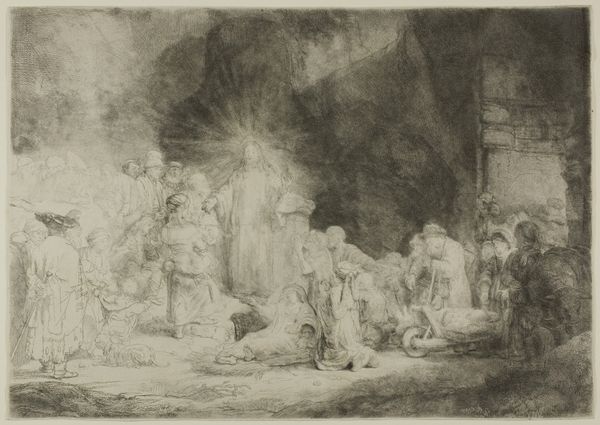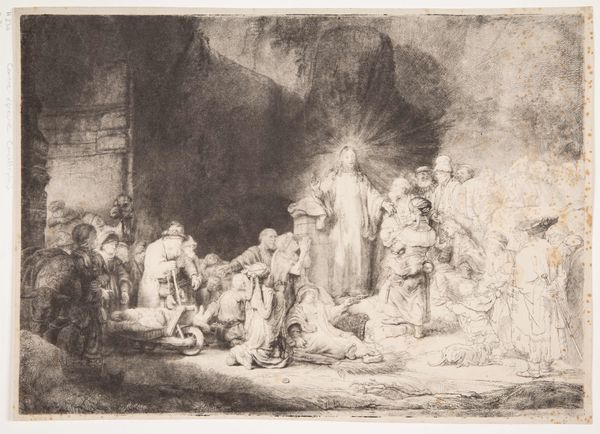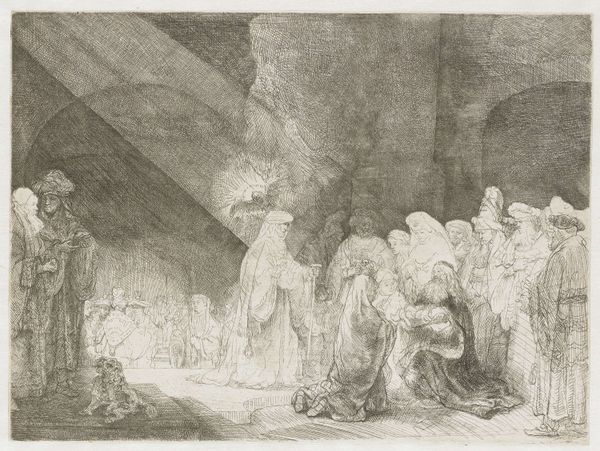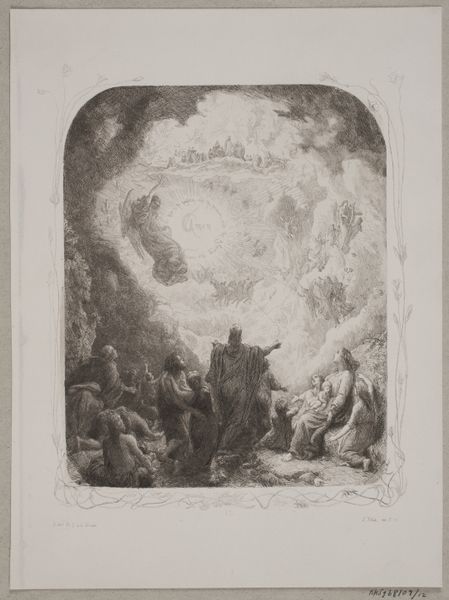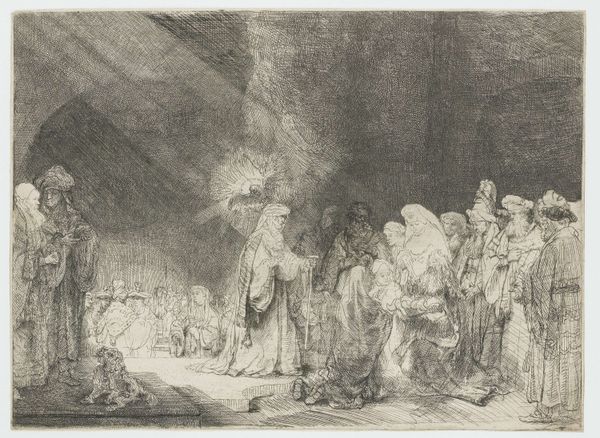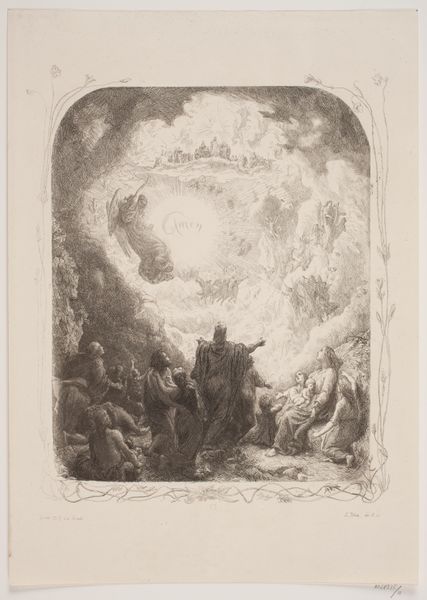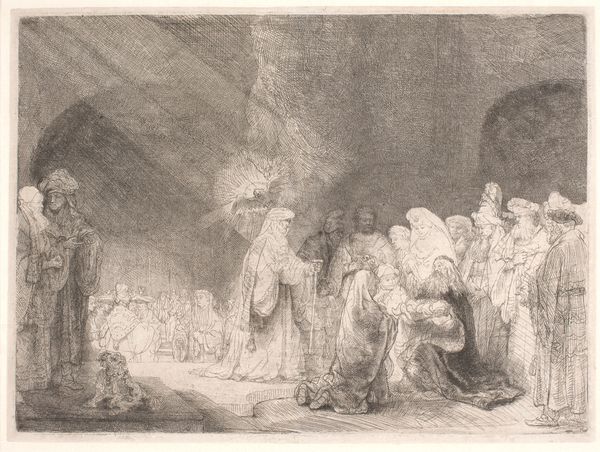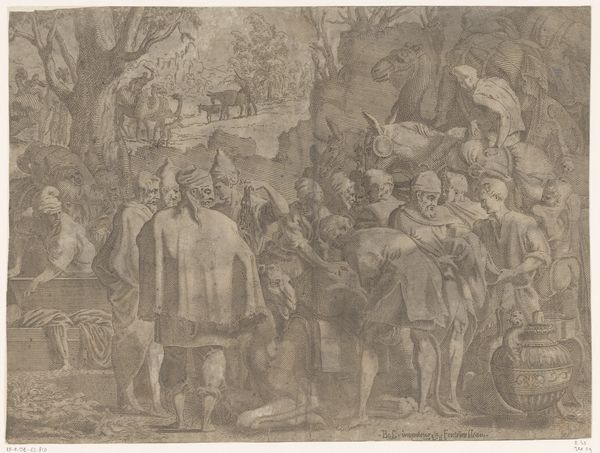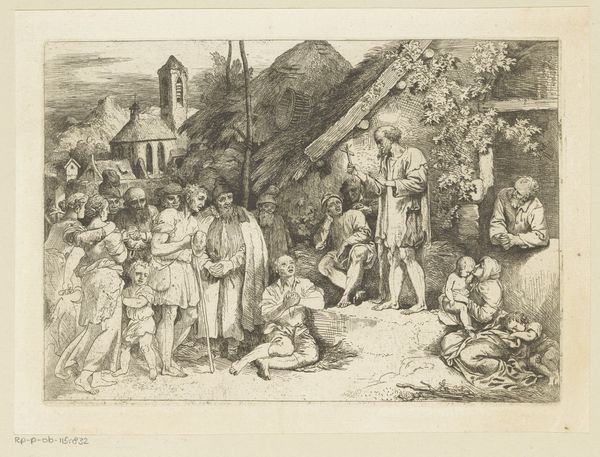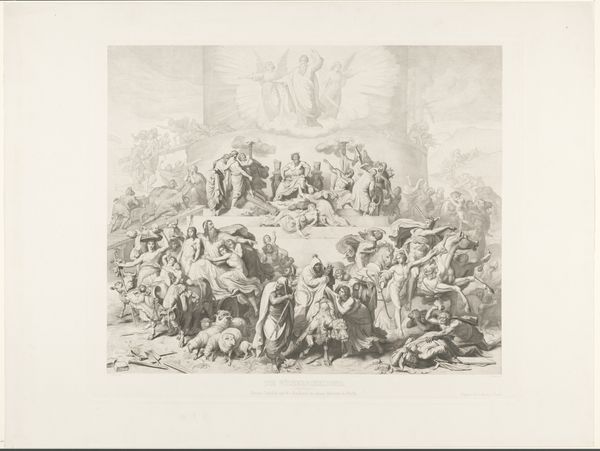
Dimensions: height 510 mm, width 650 mm
Copyright: Rijks Museum: Open Domain
Curator: This print immediately evokes a sense of both profound history and human intimacy despite the grandeur of the scene. Editor: Agreed, there’s an immediacy to the composition. It's almost like eavesdropping on a moment in time. The delicate, intricate linework in this engraving, created by Jean-Pierre Norblin de la Gourdaine in 1808, really pulls you in. It's entitled "Prediking van Johannes de Doper" or "Preaching of John the Baptist." Curator: Absolutely. And notice how Norblin uses landscape conventions of the Baroque period, which provides not merely a backdrop but also imbues the work with spiritual symbolism and emotional depth. We are dealing with an interpretation grounded in history, tradition, and cultural continuity. The placement of figures in relation to the architecture behind them seems deeply intentional. Editor: Precisely. Positioning John the Baptist within that dramatic landscape – preaching towards the bottom left -- also resonates with larger power structures and the potential for individual dissent. There’s a fascinating interplay between individual belief and the collective body here, something that was becoming all the more urgent as revolution rippled through Europe at this time. Notice the dog right bottom in the foreground – a small addition to the image that can symbolize loyalty but perhaps represents uncivilized society in the eyes of those present in the print. Curator: That's an astute observation. It underscores how Norblin utilizes these age-old archetypes not as stale relics, but as containers for profound psychological insights. It also provides commentary of that period's need to represent individuals as both complex and part of the history which shaped them. Editor: I am interested in that complex duality that existed between the Baroque aesthetics and revolutionary spirit, so Norblin is, in some ways, straddling that tension here with John the Baptist acting almost like a figure for rebellion. Curator: That's a very compelling reading of how figures represent concepts here! It adds layers of meaning when we understand what an allegory this work could have meant for contemporary society, as well as historical accounts of the biblical scene it shows us. Editor: Yes, situating the work within this historical context, allows us to see it less as a static depiction of an event and more as a dynamic articulation of power, faith, and resistance. It certainly changes how one interacts with the imagery here! Curator: Well, delving into those symbolic and historical currents only enriches our experience and sharpens our awareness of its timeless relevance. Editor: I agree, seeing it in this way reminds us that artworks are never created in a vacuum. Thank you for illuminating the various intricacies of the etching and how context matters.
Comments
No comments
Be the first to comment and join the conversation on the ultimate creative platform.
